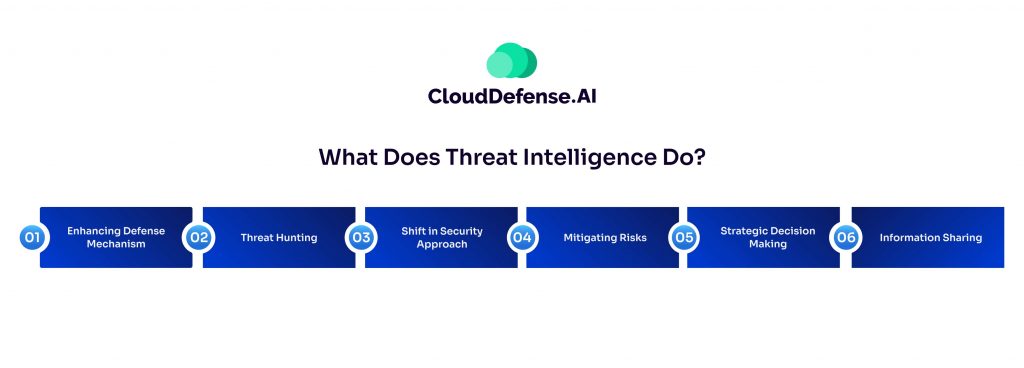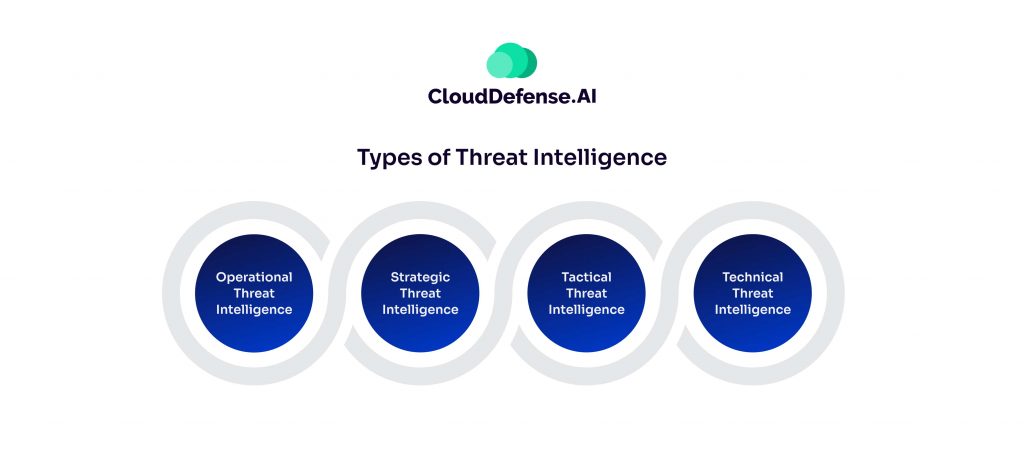What is Cyber Threat Analysis?
Cyber threat intelligence, or threat intelligence, is the collection, processing, and analysis of data to understand threat actors’ motives, targets, and attack behaviors. It provides evidence-based insights that help organizations shift from a reactive to a proactive security approach.
Utilizing context, signals, and predictive analytics, threat intelligence facilitates quicker, informed security decisions to reduce risks, and proactively escalate.
Why is Cyber Threat Intelligence Important?
Cyber threats are rising in number and are evolving to be smarter, quicker, and more focused. Companies must not delay their responses until after an attack happens. This is where Cyber Threat Intelligence plays a crucial role. It enables organizations to stay ahead of threats by understanding the attackers’ motives, tactics, and potential targets before they strike.
- Proactive Defense, Not Just Reaction: Instead of scrambling to fix security breaches after they happen, CTI gives businesses early warning signs of potential attacks. By analyzing real-time data, companies can patch vulnerabilities, block malicious activity, and stop cyber threats before they escalate.
- Smarter, Data-Driven Security Decisions: Not all cyber threats are created equal. CTI helps security teams focus on the real risks by prioritizing threats based on impact, likelihood, and urgency. This prevents wasted time and resources on low-level threats while ensuring critical vulnerabilities are addressed first.
- Faster and More Effective Incident Response: When a cyberattack does happen, every second counts. With CTI, security teams have access to real-time threat intelligence, attack indicators, and past attack patterns—allowing them to respond faster and shut down threats before they cause major damage.
- Strengthening Compliance and Risk Management: Regulatory requirements like GDPR, HIPAA, and ISO 27001 demand strong security measures. CTI helps businesses stay compliant by identifying risks early and ensuring security policies align with industry standards.
- Gaining the Upper Hand Against Attackers: Hackers rely on stealth and surprise, but CTI removes that advantage. By understanding how attackers operate, organizations can stay one step ahead, making it harder for cybercriminals to succeed.
Bottom Line? Cyber Threat Intelligence is a Must-Have
CTI is not limited to large corporations; it is crucial for any business aiming to defend its data. reputation, and bottom line. Whether it’s stopping ransomware, preventing phishing attacks, or securing cloud environments, threat intelligence turns cybersecurity from a guessing game into a strategic advantage.
What is a Threat Intelligence Platform?
A Threat Intelligence Platform is a solution designed to aggregate, correlate, and analyze threat data from multiple sources in real-time. It enables security teams to understand, anticipate, and respond to cyber threats effectively.
Key Functions of a Threat Intelligence Platform:
- Data Aggregation: Collects threat data from diverse sources, including internal logs, external threat feeds, and open-source intelligence, into a unified repository.
- Correlation and Analysis: Processes and correlates the aggregated data to identify patterns, relationships, and potential threats that may not be apparent when data is viewed in isolation.
- Enrichment: Enhances raw data with additional context, such as geolocation, threat actor profiles, and attack methodologies, providing a comprehensive view of potential threats.
- Integration: Seamlessly integrates with existing security tools like SIEMs, firewalls, and intrusion detection systems, enabling automated response actions and streamlined workflows.
- Collaboration: Facilitates information sharing within the organization and with external partners or communities, promoting a collective defense strategy against emerging threats.
Why is a Threat Intelligence Platform Essential?
In an era where cyber threats are becoming more sophisticated and frequent, a TIP empowers organizations to:
- Enhance Proactive Defense: By identifying and understanding threats before they impact the organization, enabling preemptive measures.
- Improve Incident Response: Providing detailed insights and context accelerates the investigation and remediation of security incidents.
- Optimize Resource Allocation: Prioritizing threats based on relevance and severity ensures that security efforts focus on the most significant risks.
Adopting a Threat Intelligence Platform is a strategic choice for organizations looking to enhance their cybersecurity measures and remain one step ahead of threats in a constantly changing environment.
What Does Threat Intelligence Do?

Threat intelligence collects, analyzes, and interprets cyber threat data to help organizations detect, prevent, and respond to security risks. It provides insights into threat actors, attack methods, and vulnerabilities, enabling proactive defense.
Cyber Threat intelligence empowers businesses to outpace cybercriminals by focusing on critical threats, improving incident response, and seamlessly connecting with security tools. This strategy reduces risks and improves the overall cybersecurity posture.
Who is a Cyber Threat Intelligence Analyst?
A Cyber Threat Intelligence Analyst is a cybersecurity expert responsible for identifying, analyzing, and mitigating cyber threats before they cause harm. They gather data from multiple sources, such as dark web forums, malware reports, and threat feeds, to track emerging attack patterns and understand cybercriminal tactics.
CTI analysts not only identify threats; they also deliver actionable intelligence to security teams, enabling organizations to foresee attacks, prioritize risks, and enhance their defenses. Their expertise ensures that businesses stay ahead of cyber adversaries by proactively blocking vulnerabilities, enhancing incident response, and improving overall security posture.
With the swift evolution of cyber threats, a skilled CTI analyst is a vital asset for organizations committed to protecting their data, assets, and reputation.
Types of Threat Intelligence

Understanding the various types of threat intelligence is crucial for organizations aiming to bolster their cybersecurity defenses. Each type offers unique insights tailored to different aspects of security operations.
Strategic Threat Intelligence
This high-level analysis provides a broad overview of the threat landscape, focusing on long-term trends and emerging risks. It’s designed for decision-makers, offering insights into potential adversaries’ motives and capabilities and informing policy-making and strategic planning. Strategic intelligence often comes from open-source information, including white papers, research reports, and news articles.
Tactical Threat Intelligence
Tactical intelligence delves into the specific techniques, tactics, and procedures (TTPs) employed by threat actors. It offers detailed information on how attacks are orchestrated, aiding security teams in developing detection methods and preventive measures. This type of intelligence is essential for configuring security tools and training staff to recognize and respond to specific threats.
Operational Threat Intelligence
Operational intelligence centers on the details of ongoing attacks, providing real-time insights into the nature, intent, and timing of threats. It’s invaluable during active incidents, helping organizations understand the scope of an attack and implement effective response strategies. Sources for operational intelligence include intercepted communications, logs, and direct observations of threat activities.
Technical Threat Intelligence
This type focuses on the specific indicators of compromise associated with attacks, such as malicious IP addresses, domain names, file hashes, and URLs. Technical intelligence is highly actionable, enabling security systems to detect and block known threats. It’s often derived from threat data feeds, malware analysis, and shared databases of malicious indicators.
Organizations can create a thorough and proactive cybersecurity strategy by incorporating various types of threat intelligence, addressing threats effectively at all levels.
Key Components for Actionable Cyber Threat Intelligence
Developing actionable cyber threat intelligence is essential for organizations to anticipate and counteract potential security threats effectively. Key components that contribute to actionable threat intelligence include:
- Complete Data Collection: It is fundamental to gather threat data from diverse sources, such as open-source intelligence (OSINT), social media intelligence (SOCMINT), human intelligence (HUMINT), and technical intelligence (TECHINT). This multifaceted approach ensures a broad perspective on potential threats.
- Contextual Analysis: Analyzing collected data within the context of the organization’s specific environment and industry is crucial. This involves understanding the relevance and potential impact of threats, which aids in prioritizing responses effectively.
- Timeliness: The value of threat intelligence is highly dependent on its timeliness. Prompt dissemination of information allows organizations to respond to threats before they can cause significant harm.
- Accuracy: Ensuring the precision of threat data is paramount. Accurate intelligence prevents unnecessary actions and focuses resources on genuine threats, enhancing the efficiency of security measures.
- Relevance: Incorporating threat intelligence to align with the organization’s specific assets, operations, and threat landscape ensures that the information is pertinent and actionable.
- Integration with Security Systems: Integrating threat intelligence into existing security infrastructures, like SIEMs and intrusion detection systems, allows for automated responses and strengthens the overall security posture.
- Collaboration and Information Sharing: Information sharing with industry peers and threat intelligence communities fosters a collective defense strategy, enhancing the ability to anticipate and mitigate emerging threats.
Emphasizing these aspects helps organizations convert raw data into actionable insights, improving cybersecurity and addressing potential threats.
How to Implement Cyber Threat Intelligence?
Implementing cyber threat intelligence in your organization is not an easy task, but following certain steps can easily achieve the task. Here are the steps to implement the threat intelligence:
- Step 1: Define the primary requirement and objective of the implementation first.
- Step 2: It is important that you should identify threat vectors before you start gathering threat information.
- Step 3: You will also have a list of all the personnel who will be involved in the implementation process. You should consider experts who have experience with threat intelligence tools and techniques.
- Step 4: After defining the threat vector, your next task is to gather all the required threat information from a huge threat data set. Various techniques are involved during the extraction process to gather the information accurately.
- Step 5: The extracted information is then analyzed by threat intelligence analysts utilizing various technologies and tools, providing accurate information of possible threats. The extracted threat information also goes through structured processing that aids in identifying and blocking threats.
- Step 6: Your next task is to share the accurate information about security threats with stakeholders, security teams and other executives. The information is then utilized to harden the security controls against possible security attacks. The information sharing also helps the organization across the world to block the attack.
Golden Rules for Implementing a Cyber Threat Intelligence Program
Implementing a cyber threat intelligence program is a vital requirement for most organizations as it will help them stay ahead of potential and emerging security threats. However, there are some golden rules you need to follow to properly establish a cyber threat intelligence program. Here are those golden rules:
- You need to create a plan before you start the implementation of a cyber threat intelligence program.
- To successfully implement the program, you need to involve the right experts, especially individuals with experience in threat intelligence.
- You need to understand how threat data is different from threat intelligence. Threat data is the large data set that is sourced from different repositories which is then processed, aggregated and analyzed to extract threat intelligence.
- You also need to build communication so that you can seamlessly share all the threat intelligence.
- You need to identify who will require the threat intelligence you extracted and then share it with them.
- Implementing the right TTP will ensure effective implementation of the threat intelligence program.
- You need to integrate the cyber threat intelligence program with your organization’s existing security technology for a successful implementation.
Final Words
Cyber threat intelligence has become a priority for most organizations worldwide because it provides the necessary information for cybersecurity solutions. It helps organizations identify potential threats and aids in making strategic decisions for the future.
This article explains cyber threat intelligence in detail and provides associated information to give you an in-depth idea. A thorough read will help you understand cyber security threat intelligence and how to utilize it.







